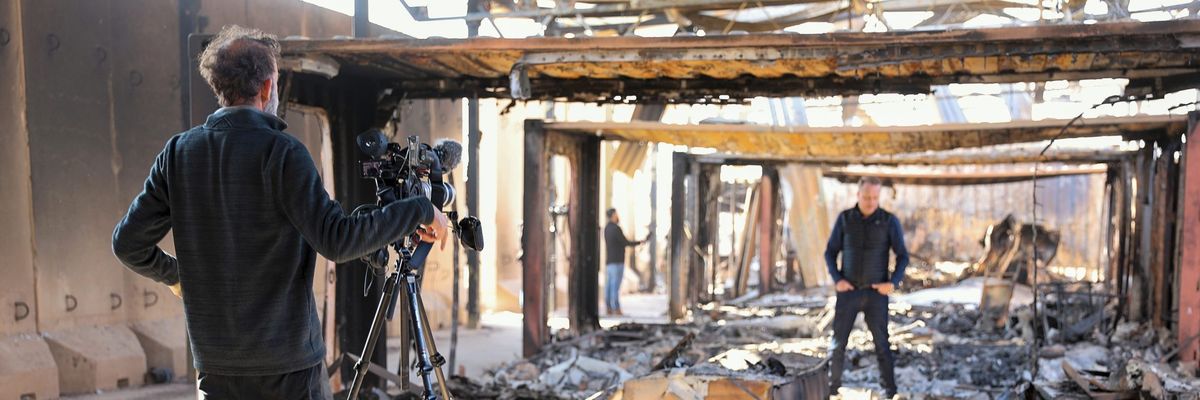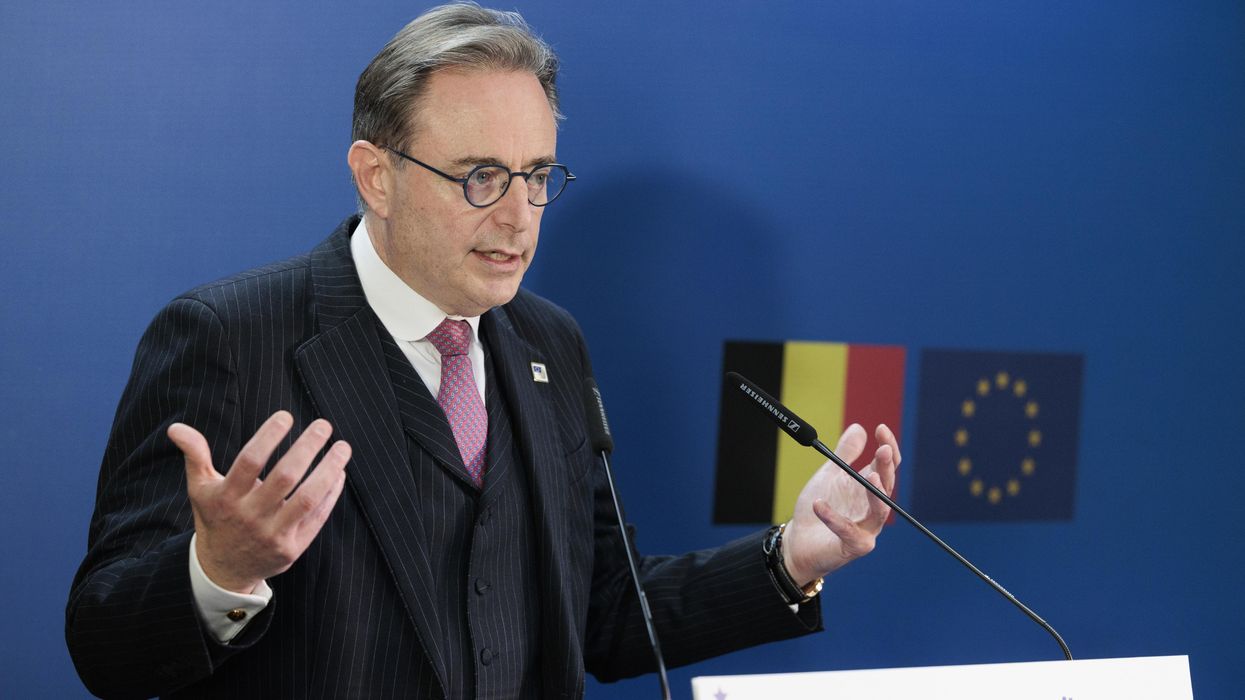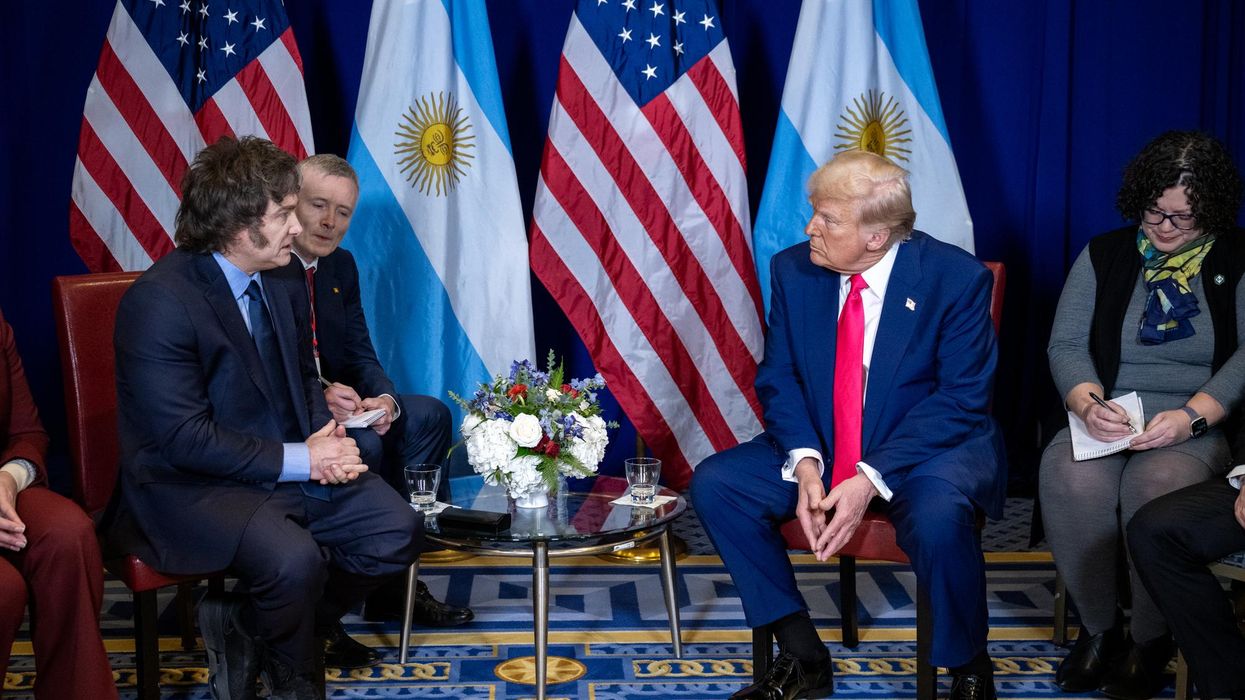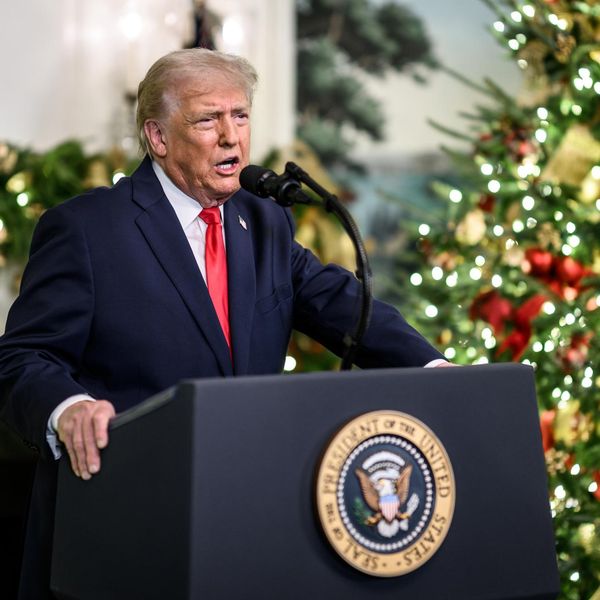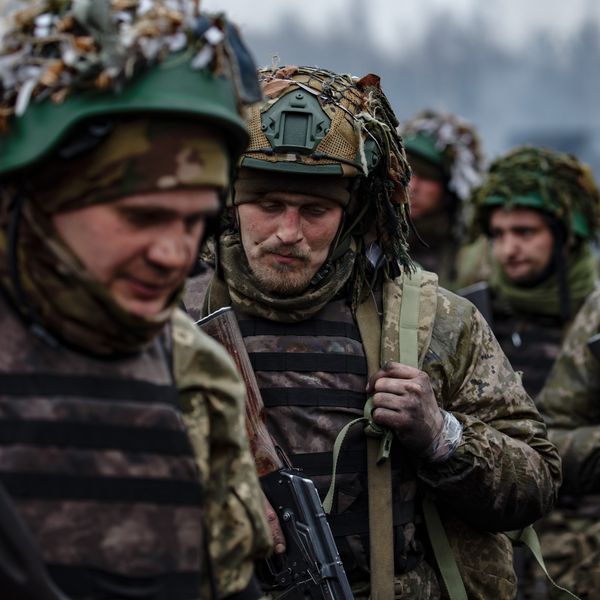In the early hours of January 8, 2020, 11 Iranian ballistic missiles struck the largest military base in Iraq hosting U.S. troops, some leaving craters up to 30 feet wide. The strikes obliterated living quarters, aircraft hangars, and military equipment. CBS News called the attack “the largest ballistic missile attack ever against Americans,” and it was certainly the only attack of such scope from a U.S. adversary to occur during ostensible peacetime.
The Iranian missile attack viewed two years later showcases the failure of the Trump administration’s policies towards Iran. Trump abandoned a working diplomatic model with Iran when he reneged on the nuclear deal in May 2018. The policy he favored, a “maximum pressure” campaign of economic and covert warfare, set off the escalatory cycle that led to Iranian missiles raining down on U.S. troops. The dire consequences of Trump’s Iran policy for regional stability and core U.S. national security interests serve as a warning to President Biden to not double down on Trump’s self-defeating approach as he seeks to revive the nuclear accord.
For the American troops on the Ayn al Asad base in Iraq that had bunkered down, owing in part to Iran giving advanced warning of the attack to the Iraqi government, it was a harrowing ordeal. In subsequent interviews, those who were on the base shared stories of passing out repeatedly during the hours-long missile barrage and emerging shocked that they survived. More than 100 American military personnel were wounded with traumatic brain injuries, many of whom were later awarded the Purple Heart. Trump at the time dismissed the injuries as “headaches” and said they were “not very serious.”
Iran’s direct attack on U.S. forces was retaliation for the U.S. assassinations five days earlier of Iranian general Qassem Soleimani, Iraqi Popular Mobilization Forces Commander Abu Mahdi al Muhandis, and eight others. IRGC aerospace commander Amir Ali Hajizadaeh, who oversaw the missile attack, said last year “the intention had not been to kill any U.S. troops,” but “could have been planned in such a way that as many as 500 died in the first stage.”
The significance of Iran’s immediate response to the assassinations laid in its strategic implications. Iran long vaunted the capabilities of its ballistic missiles, but they remained largely unproven. The Trump administration provided Iran the opportunity to demonstrate their prowess against a global superpower, which came in the form of precision strikes against U.S. targets hundreds of miles away. Similar precision was on display the previous fall, albeit in the form of cruise missiles and drones rather than ballistic missiles, in an attack on Saudi Aramco widely attributed to Iran. That attack took out half of Saudi oil production in one go, albeit briefly.
The geopolitical impact of Iran’s military counter-escalations during the Trump era were twofold: they reinforced Iranian deterrence against attack and triggered regional rebalancing towards engaging Iran. As Christopher Clary of the University of Albany said after the missile attack on Ayn Al Asad: “If Iran has precise missiles, then any U.S. war plan became quite a bit harder to execute in the last week.” Not only did U.S. military bases that dot the Middle East suddenly become far more vulnerable, but so did the critical infrastructure of U.S. partners in the region.
New York Times columnist Thomas Friedman wrote after the strikes on Saudi Aramco: “Every country is now recalculating its security strategy, starting with Israel.” He cited a founder of Israel’s Dimona nuclear reactor saying that Israel should shut down the facility considering the newly demonstrated Iranian capability. Friedman emphasized that every Arab capital was also “recalculating” its approach to Iran as a result. Years later, this is indeed what has occurred.
Saudi Arabia, the United Arab Emirates, and other Arab states originally opposed the Iran nuclear deal and staunchly supported Trump’s efforts to isolate Iran. A 2018 essay in the New Yorker detailed how Saudi Crown Prince Mohammad bin Salman and de facto UAE ruler Mohammad bin Zayed gained an early foothold with the Trump administration and strongly pushed for a hardline against Iran. The article recounts how MBZ played a “pivotal role” in creating an alliance with Israel to influence the Trump administration, especially its Iran policy. It included a quote from a senior Emirati official proclaiming: “I can envision us being in the trenches with Israel fighting against Iran.”
But by the final year of Trump’s administration, the UAE had broken from the maximum pressure campaign. As the a piece in the Christian Science Monitor noted after Soleimani’s assassination in January 2020, “blindsided Gulf leaders are flying around the world to try to prevent a conflict they once sought, but now fear.” The UAE began sending delegations to Iran to de-escalate in 2019 after attacks on its tankers. Saudi Arabia, meanwhile, also began seeking de-escalation, and, according to Iraqi officials, Soleimani was in fact carrying Iran’s response to a Saudi invitation for talks when he was assassinated.
What Trump accomplished with his Iran policy was to expose the emptiness behind U.S. security guarantees in the region. The détente between Iran and the UAE and Saudi Arabia has only gained traction since he left office with quiet encouragement from the Biden administration. Recently, the UAE’s national security adviser visited Iran and its senior officials have declared that “diplomacy and engagement is the best step forward” on Iran. Iran-Saudi talks have also made progress though have not yet resulted in a breakthrough. Most significantly, the Arab Persian Gulf states now support the restoration of the nuclear deal they once vehemently opposed.
Trump’s “maximum pressure” campaign was a strategic failure for America on every front. Iran’s military reprisals have strengthened its regional position and bolstered its security against foreign attack. It has dramatically expanded its nuclear program while stabilizing its economy in face of a total economic blockade. In retrospect, the only thing Trump accomplished was impoverishing ordinary Iranians, eviscerating Iran’s moderate factions and nearly starting a catastrophic war on multiple occasions.
The Biden administration must be realistic about the current strategic landscape and the innate danger of doubling down on Trump’s policies. President Biden has not let up on Trump’s “maximum pressure” campaign yet, and administration officials have threatened an unviable “Plan B” of increasing pressure if talks to restore the nuclear deal fail. This would be a grave miscalculation. At this stage, Washington should take every measure to sustain diplomacy and offer necessary concessions to prevent another escalation cycle that would be enormously costly for the United States.

